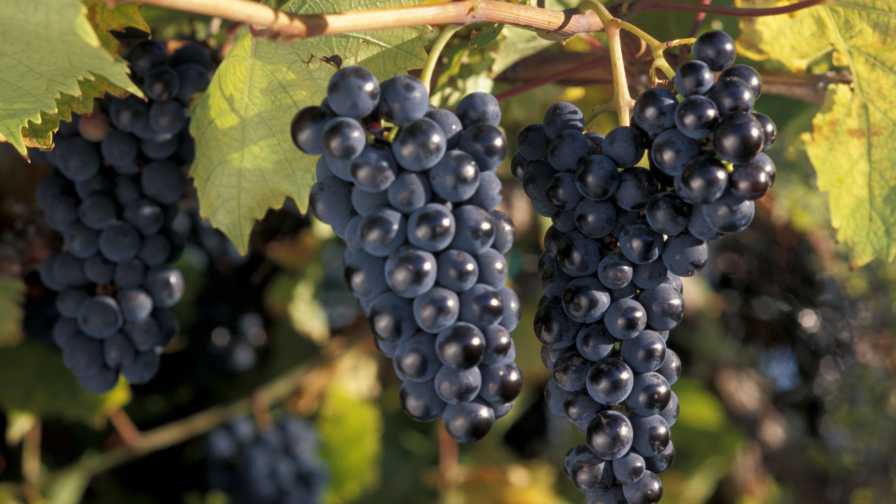How To Reduce Postharvest Disease in Your Vegetable Crops

These beet leaves are showing postharvest disease symptoms.
Photo by Anthony Keinath
Your crop is harvested, properly cooled, and awaiting shipment or sale. It’s time to relax a bit, you say. Although you may think disease management tasks are finished, pathogens don’t operate on crop production cycles.
Immature, actively growing plants usually are less susceptible to leaf and fruit pathogens than mature plants once they are past the seedling or transplant stage. This rule of thumb applies to traditional fruiting vegetables like tomato and watermelon, as well as some leafy greens like beet greens and kale. Above-ground pathogens prefer mature leaves and ripe fruits.
Recommended postharvest storage temperatures are below the optimal temperature for pathogen growth and above a temperature that causes cold damage on marketable produce. A common temperature for cold rooms within that range is around 40°F.
Postharvest Puzzles
I’ve observed significant increases in two different leaf spots on two different leafy greens: Cercospora leaf spot on bunched beets and Alternaria black spot on kale. In both cases, freshly harvested, perfectly heathy leaves checked by two people were stored in sealed plastic bags in a cold room at 40°F.
One week later, half of the beet leaves had typical symptoms of Cercospora leaf spot — small tan-to-gray spots with a deep-red margin. What’s worse, the Cercospora fungus was producing spores on these spots at the low temperature when it’s not supposed to be active below 59°F.
Residue from effective conventional and organic fungicides applied before harvest had only a marginal effect on postharvest disease.
Kale, as a cool-season vegetable, can stand low postharvest temperatures. However, in this instance, black spot developed on 25% of the healthy leaves at both 33°F and 40°F. Typical round, gray-to-black spots were found at the margins of leaves, on the leaf blades, or on the midribs. Spots on leaf margins tended to also have a yellow halo.
We tested two organic treatments to prevent postharvest development of black spot: field sprays of hydrogen dioxide two days before harvest and dips in citric acid immediately after harvest. Neither treatment had any effect.
Citric acid is typically used to prevent growth of foodborne bacterial pathogens. In general, they are inhibited by acidic conditions. Fungi, on the other hand, don’t mind moderately low pH, so it’s not surprising that citric acid didn’t affect black spot.
The challenge with field diseases that continue to develop postharvest is that invisible pathogen spores can be present on stored produce.
Clearly, the leaf spots on beet came from spores on the leaves at harvest. In the citric acid study, where kale was submerged in a citric acid solution, the wash likely removed spores stuck on the leaves. The new lesions likely had started before harvest but were too small to be seen and graded out.
Take a look at the section below for tips to help you avoid these issues.
Get a Jump on Postharvest Disease — 5 Things To Do
1. As soon as your leafy greens reach a marketable size, harvest them before they reach their most susceptible stage. Consider harvesting leafy greens on the smaller side, particularly beets and kale, if a greater marketable percentage can make up for a decrease in weight or volume.
2. Try to harvest crops before a predicted rain, not after. Rain is a very effective way to spread pathogen spores. When raindrops land on leaves, the resulting backsplash deposits spores on nearby leaves, increasing the number of contaminated leaves.
3. Time harvesting to when dew has dried, even if the leaves will be washed after harvest. It’s a given that handling the crop will spread pathogens. If the leaves are wet when handled, transferred spores can germinate and infect leaves in the hour or so between harvest and washing.
4. Be careful with second cuts. If turnip or mustard green leaves are cut and allowed to regrow, the wounds made by the first cut are instant entry points for pathogens, particularly bacteria. Bacterial blight is always worse on the second cut of a resistant mustard than on the first cut.
5. Be careful about leaving culls in the field. Of course, it’s better to leave unmarketable leaves or fruit in the field rather than sorting them out on the packing line. Diseased cull leaves and fruit are a potent pathogen source that puts crop re-growth at risk. Consider sending a clean-up crew through the field after the harvest crew and bury or burn crop waste.










